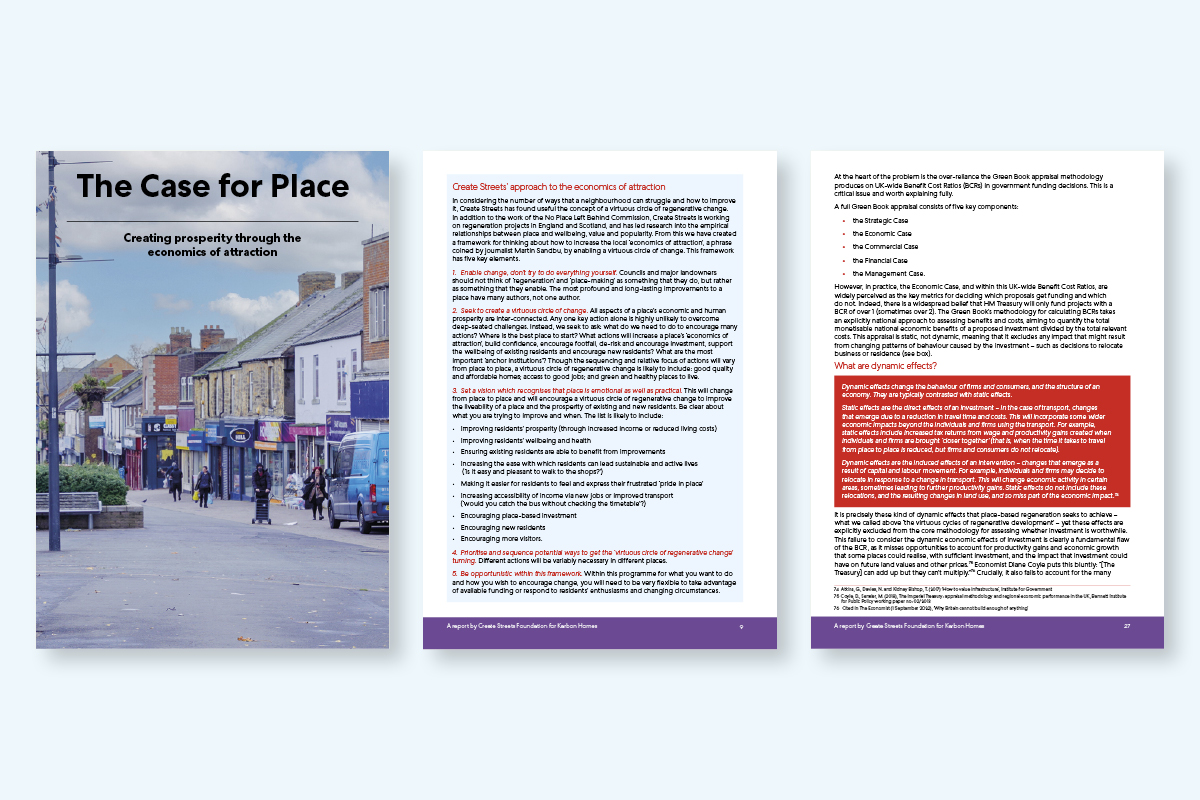You are viewing 1 of your 1 free articles
The Thinkhouse Review: levelling up and regeneration in the North of England – the unequal effect of the cost of living crisis
Every month, the Thinkhouse Review flags the most recent must-read housing research from across the UK. This month, Suzanne Benson explores the take-aways from a paper about the challenge of delivering true regeneration in the North of England
For this month’s Thinkhouse blog, I have chosen to focus on a single report – the excellent The Case for Place – creating prosperity through the economics of attraction, produced by the Create Streets Foundation and commissioned by Karbon Homes. This report takes a detailed and analytical approach to the challenge of implementing the levelling-up agenda and achieving true regeneration in the North, with a particular focus on the North East.
The standout statistics focused on the skewed impact of the cost of living crisis on communities in affected areas – a factor which is not immediately obvious when looking at the national picture. The rise in prices and the spiral in the Retail Price Index figures have had a detrimental effect across the country, but specific factors in areas experiencing the long-term effects of low investment have created particularly harsh conditions.
Poorly maintained stock leads to increased heating bills and a lack of transport connections creates an over-reliance on petrol. These factors have contributed to an inflationary impact up to 30% higher in some Northern cities. This is taking effect in areas with some of the lowest-income households. It is in this context the report considers current challenges in effectively taking forward the government’s levelling-up agenda.
This context highlights an important insight in considering how the government approaches levelling up, and its response to mounting cost of living pressures: global events and macroeconomic forces interact with localised place factors to determine different households’ experiences.
The report looks at the following areas in detail:
- The value of regenerating left-behind neighbourhoods – considering the wider case for why central government should support and fund interventions to regenerate deprived neighbourhoods
- The different models of regeneration which have been used in different parts of the country and the conditions needed for different approaches to succeed
- Why place quality matters and how to approach it
- The current framework for public investment and the need for a new approach from central government towards funding and policy decisions
- The current barriers to using public funding and policy to create the conditions for increased investment in housing and placemaking in left-behind places, with a focus on the role of HM Treasury’s Green Book
- By way of conclusion, the report goes on to make recommendations to empower government to create the conditions for increased investment in left-behind places, enabling prosperity, and enhancing renewal and regeneration of the homes, streets and town centres which most urgently need levelling up
Overall, the authors present a number of key take-aways. First, the focus of the report is centred on the concept of ‘left-behind areas’ – defined as “communities experiencing slow long-term economic growth and depressed house prices”. Such localities are found in every region of the UK, with higher concentrations in the North of England and especially in the North East.
The key point for these communities is that they will not alone attract private sector investment and any prospect of regeneration needs to be supported by long-term, consistent intervention in the local market.
Funding and resources
Key to the analysis of the currently available pots of public funding is the emphasis that government should be an enabler rather than the sole form of funding and delivery. While there is a generally accepted narrative that the market cannot do it alone, it is equally important to recognise that public sector funding and resource is also only part of the picture. True levelling up can only be achieved through an effective combination of public and private sector intervention.
The focus on the North, and particularly the more challenged areas in the North East, allows the authors to highlight the specific challenges created by national policymaking. This is not necessarily to raise a political challenge, but more to recognise that national metrics can distort the framework for investment. This creates a high risk of poorer placemaking in regions with lower-demand housing markets. So it is not surprising that a key recommendation of the report is to increase devolution of funding and powers.
The Homes England budget has not to date been targeted towards left-behind areas due to the focus on additionality – there does, however, seem to be a move towards change. Key recommendations here focus on extending Homes England’s investment to include refurbishing existing homes in priority areas and tasking Homes England with place-based regeneration.
Overall, the report concludes with many of the key recommendations the sector would expect to see in the context of improving place-based regeneration.
However, the true value of this report lies in the level of detail and analysis generated by the relatively narrow geographical focus, combined with the commentary on the specific impact of current economic and political headwinds in recent months.
Suzanne Benson, partner, Trowers & Hamlins
Sign up for our daily newsletter
Already have an account? Click here to manage your newsletters













